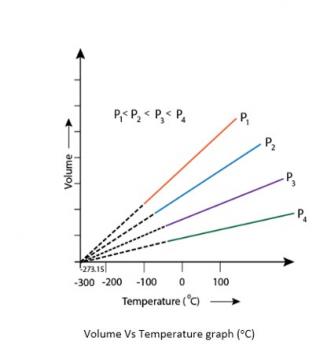States of Matter
Get insights from 92 questions on States of Matter, answered by students, alumni, and experts. You may also ask and answer any question you like about States of Matter
Follow Ask QuestionQuestions
Discussions
Active Users
Followers
New answer posted
5 months agoContributor-Level 10
5.25. (a) Other than attractive forces, molecules also exert repulsive forces on one another. When two molecules are brought into close contact with each other, the repulsion between the electron clouds and that between the nuclei of two molecules comes into play. Magnitude of the repulsion rises very rapidly as the distance separating the molecules decreases. This is the reason that liquids and solids are hard to compress. In these states molecules are already in close contact; therefore, they resist further compression; as that would result in the increase of repulsive interactions.
New answer posted
5 months agoContributor-Level 10
5.24. (b) Viscosity of liquids decreases as the temperature rises because at high temperature molecules have high kinetic energy and can overcome the intermolecular forces to slip past one another between the layers.
New answer posted
5 months agoContributor-Level 10
5.23. (a) The dipole-dipole interaction between two HCl molecules is stronger than the London forces but is weaker than ion-ion interaction because only partial charges are involved.
New answer posted
5 months agoContributor-Level 10
5.22. Higher the critical temperature, more easily the gas can be liquefied, i.e., greater are the intermolecular forces of attraction. Hence, CO2 has stronger intermolecular forces than CH4.
New answer posted
5 months agoContributor-Level 10
5.21. At -273°C, volume of the gas becomes equal to zero, i.e., the gas ceases to exist.

New answer posted
5 months agoContributor-Level 10
5.20. SI unit of pressure, P = Nm-2
SI unit of volume = m3
Si unit of temperature, T = K
SI unit of number of moles, n = mol
Thus, SI unit of pV2T2/n = (Nm-2) (m3)2 (K) 2mol = Nm4K2mol-1
New answer posted
5 months agoContributor-Level 10
5.19. As the mixture H2 and O2 contains 20% by weight of dihydrogen, therefore,
If H2 = 20g, then O2 = 80g
No. of moles of H2 = 20/2 = 10 moles
No. of moles of O2 = 80/32 = 2.5 moles
Partial pressure of H2 = [No. of moles of H2/ (No. of moles of H2 + No. of moles of O2)] x
Ptotal= [10 (10 + 2.5)] x 1 = 0.8 bar
New answer posted
5 months agoContributor-Level 10
5.18. Given, P1 = P2 and V1 = V2
We know that P1V1 = P2V2
Or, n1RT1 = n2RT2
i.e., n1T1 = n2T2
Substituting n = w/M, we get
(W1/M1) x T1 = (W2/M2) x T2
(2.9/M1) x (95 + 273) = (0.184/2) x (17 + 273)
M1 = (2.9 x 368 x 2) / (0.184 x 290) = 40 g mol-1
New answer posted
5 months agoContributor-Level 10
5.17. No. of moles of CO2 = Given mass of CO2 / Molar mass
= 8.8g / 44g mol-1 = 0.2 mol
Pressure of CO2 = 1 bar
RR = 0.083 bar dm3 K–1 mol–1
T = 273 + 31.1 K = 304.1 K
According to ideal gas equation,
PV = nRT
Therefore, V = nRT/P
= (0.2 x 0.083 x 304.1) / 1 bar = 5.048 L
New answer posted
5 months agoContributor-Level 10
5.16. Radius of the balloon = 10 m
Therefore, volume of the balloon = (4/3)? r3 = (4/3) x (22/7) x (10 m)3
= 4190.5 m3
Volume of He filled at 1.66 bar and 27 °C = 4290.5 m3
To calculate the mass of He,
PV = nRT = (w/M) RT, where M is molar mass of He i.e. 4 g per mole or 4 x 10-3 kg mol-1
=> w = [ (4 x 10-3 kg mol-1) (1.66 bar) (4190.5 m3)] / [ (0.083 bar dm3 K-1 mol-1) (300K)]
= 1117.5 kg
Total mass of the balloon along with He = 100 + 1117.5 = 1217.5 kg
Maximum mass of the air that can be displaced by balloon to go up = volume x density
= 4190.5 m3 x 1.2 kg m-3 = 5028.6 kg
Taking an Exam? Selecting a College?
Get authentic answers from experts, students and alumni that you won't find anywhere else
Sign Up on ShikshaOn Shiksha, get access to
- 65k Colleges
- 1.2k Exams
- 682k Reviews
- 1800k Answers
